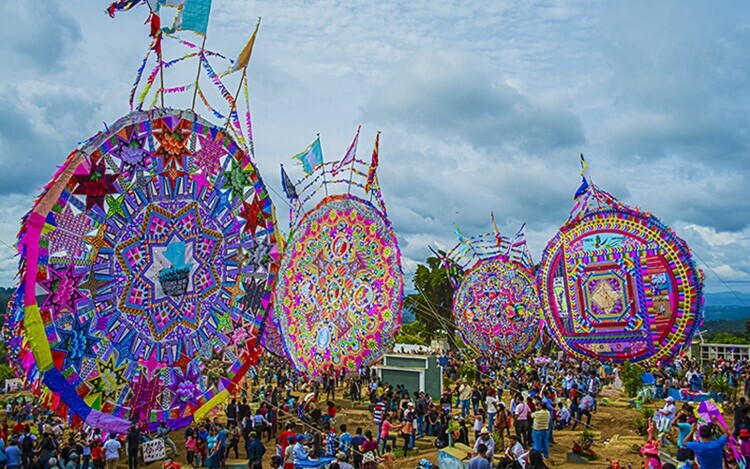Since Disney released its 2017 film, Coco, many of us have become familiar with Mexico’s celebration of Día de los Muertos—Day of the Dead or All Souls’ Day—in which families remember and honor their deceased ancestors.
In certain cultures like the ancient Mayan civilization, it was actually disrespectful to mourn someone who had died, so colorful costumes, lively music, and feasting became a part of Mexico’s long-treasured family-centered holiday. In a similar way, even though we might miss family members who have died, Latter-day Saints understand that we can see our loved ones again, and taking time to remember them doesn’t need to be a sad or mournful experience.
► You may also like: Day of the Dead: Try a family history-focused approach to Halloween season
All Souls’ Day was originally established as a Catholic prayer day, but other Christian churches and cultures have adopted the annual tradition of honoring and remembering loved ones who have passed on in a more celebratory way. According to the FamilySearch Blog, other unique traditions for All Souls‘ Day include:
- Poland: Traveling home for All Souls’ Day is sometimes just as important as Easter and Christmas for Polish citizens. Families visit cemeteries where their ancestors are buried and set their cities and homes aglow at night with hundreds of candles.
- Peru: Residents share a loaf of t’anta wawa—a sweet bread baked into the shape of a doll or small child— with friends or relatives.
- Guatemala: People fly kites at the Giant Kites Festival. And by ”giant” they aren‘t kidding—these kites can take months to build and can be as big as 65 feet across. Before sending them soaring into the sky, families write notes to deceased ancestors and tie them to the kites’ tails for loved ones to read in heaven.

Giant kites and elaborate sugar skulls may be too ambitious for your family to attempt this year (there’s always next year!), but here are three other ideas from FamilySearch.org to celebrate your family.
Looking at photos with your family can bring you closer together.
- Look over old family photos with other family members, and take time to remember your family’s experiences.
- Have each family member choose a photo from your family’s photos. Then have each family member share what photo they chose and why.
- Choose a photo of your family. Then using the FamilySearch Memories app, have each family member take turns doing an audio recording of what he or she remembers about that day.
- If you have digital photos consider displaying your family photos on a screen so everyone can see them at the same time.
- Share photos online with your cousins, aunts, and uncles, and grandparents to stay connected.
When you visit a place either in person or virtually where your ancestors lived, it helps you feel connected to them.
- Visit places that your parents or grandparents lived: a home, a school, a church, a grave, etc.
- If it’s not possible to go to a place nearby, then use Google Maps or Google Earth to view the places your ancestors lived.
- Use the FamilySearch Family Tree app to see on a map where your ancestors lived. Click the More menu, and then click Map My Ancestors.
A memory is lost when a family member passes away before the memory has been shared and saved. Don’t wait another day. Save a family memory before it’s lost.
- Which important memories from your life events, videos, stories, or photos are not already recorded?
- Prayerfully consider who in your family has a family heirloom, a photo, or a story that could be lost. Then offer to help that person save those memories.
- Ask a family member to talk about which family memories are “at-risk” for being lost. Have a family night where you retell family stories and record them.
- Record (audio or video) older family members talking about their life events.
- Digitize a photo and have a family member tell the story behind it. Who is in the photo? What is happening? Then upload the photo, tag it, and save the story on FamilySearch as a Memory.
For more ideas, visit FamilySearch.org.


